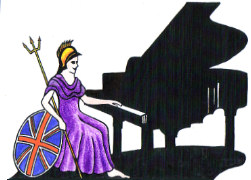Teachers, Accompanists and Piano Entertainers in the UK

UK Piano Page

Colonial House
Southend-on-Sea, Essex SS0 9ST
England
We specialise in reconditioned and restored
15 Leckey Road
Ballinderry Upper
Lisburn, County Antrim BT28 2QA
Northern Ireland
A.A Music are a leading supplier of new/used
Upton Cottage
Plantation Farm
Blandford Forum, Dorset DT11 8BZ
England
Steinway restorations and retailers of pre loved
C/O Unit 4 Pantheon Park, Wednesfield way
Wolverhampton, West Midlands WV11 3DS
England
Donner is a musical instrument online store.
11 Bishop Street
Londonderry, County Londonderry BT48 6PL
Northern Ireland
Henderson Music are Ireland's leading supplier of
Music Festival for performers and guests Our 10th
18-06-2022 01:30PM
The Morecambe Bay Piano Group was set up to extend
11-12-2021 02:00PM
The Morecambe Bay Piano Group was set up to extend
08-01-2022 02:00PM
The Morecambe Bay Piano Group was set up to extend
12-02-2022 02:00PM
Polyester and Pianos.
Polyester began as a group of polymers in W.H. Carothers' laboratory. Carothers was working for DuPont at the time when he discovered that alcohols and carboxyl acids could be successfully combined to form fibres.
Polyester as a polish is a three-component paint that utilizes the resin, catalyst and accelerant. Thanks to its tight molecular structure, polyester has a solid content which gives the product superior mechanical and chemical resistance to scratches
The application of Polyester finishes requires specialized equipment and machinery to produce a quality product. Polyester is specified when high scratch resistance and 100% sheen are needed.
Cleaning Polyester on Pianos
For everyday cleaning, wipe your piano with a clean, damp (not wet) cloth, followed by a clean dry cloth. If more stubborn soils do get on the finish, you may try dipping your cloth in a mild soap and water solution before wiping, and then follow that with a cloth dampened in clear water, and then the dry cloth.